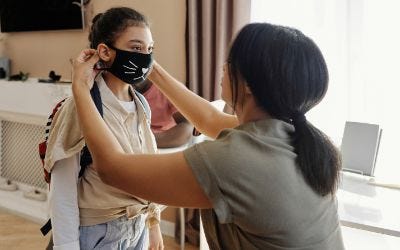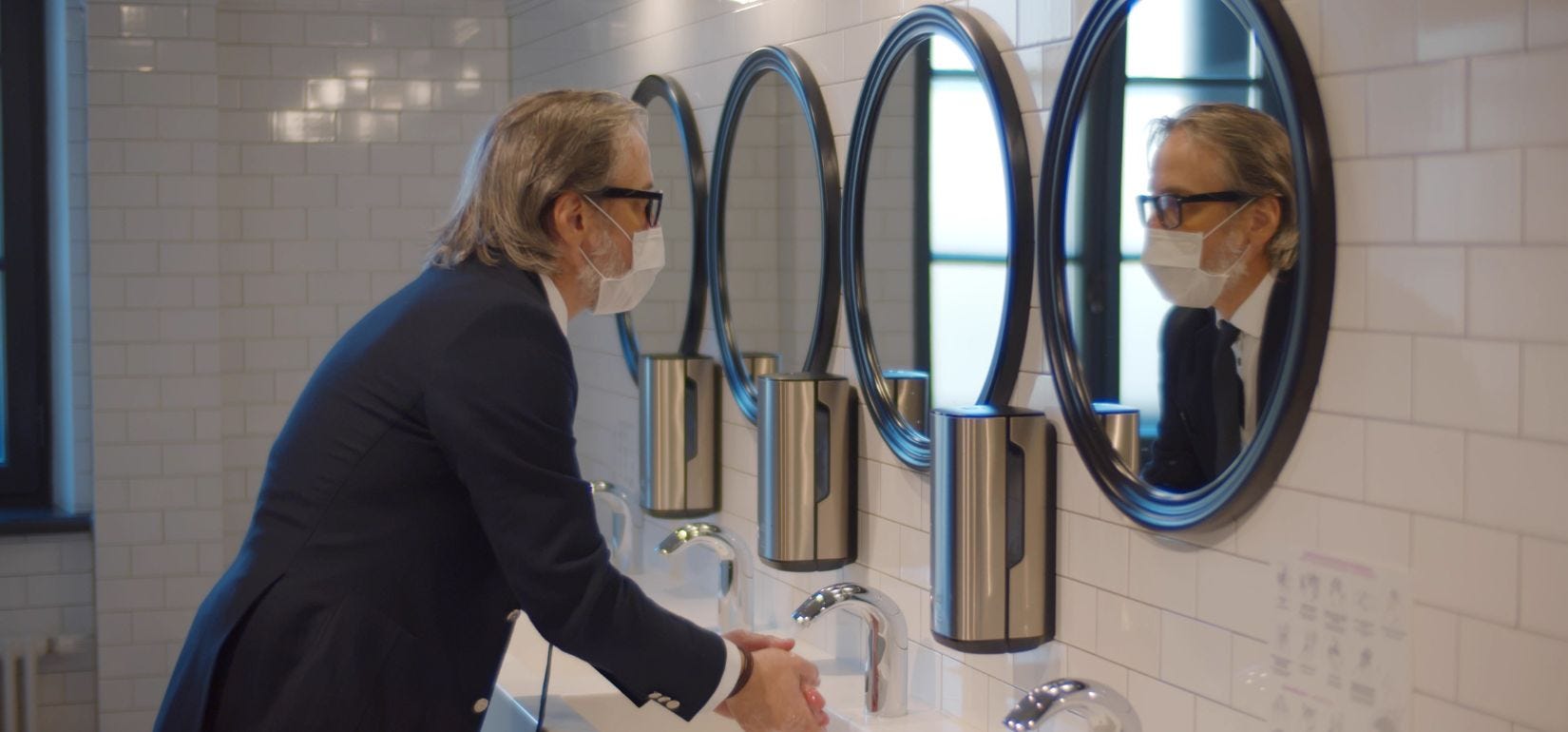Around 33 million Americans have overactive bladder (OAB)- a condition that causes frequent urination- and this number is only going to continue to grow as long as the Coronavirus pandemic carries on.
New research suggests that sars-cov-2 causes OAB symptoms in certain people who have contracted the infection and that those with existing OAB are experiencing more severe symptoms.
In this post, we'll look at the new research behind the COVID-19 and OAB correlation so you understand why you may be needing to urinate more often during the pandemic.
What Is Overactive Bladder?
OAB, sometimes referred to as urgency urinary incontinence (UUI), is a type of incontinence characterized by clinicians as experiencing sudden or frequent urges to urinate along with the need to urinate more than usual throughout the day and night. These symptoms are the result of involuntary contractions of the bladder muscles and can be difficult to manage.
Check Your Eligibility
In 2 easy steps!
Discover the bladder control supplies covered by your Medicaid plan.
Symptoms
- Sudden urge to urinate.
- Frequent urination.
- Waking up in the middle of the night to urinate (nocturia).
Causes
- Neurological disorders.
- Anxiety, stress, or nervousness.
- Diabetes
- Urinary tract infections (UTIs) or cystitis.
- Tumor in the bladder or bladder stones.
- Enlarged prostate.
- Constipation
Diagnosis
OAB is typically diagnosed by discussing symptoms with your healthcare provider or specialist, such as a urologist. Your provider may feel your abdomen, take a urine culture or urine sample, or ask you to keep a bladder diary to help you keep track of your incontinence symptoms.
How COVID-19 Is Affecting OAB
Before it was discovered that COVID-19 could worsen the symptoms of OAB, it was thought that the two were unrelated to COVID.
It's recently been found that symptoms of OAB are worsening in people with both OAB and sars-cov-2, and the increase in symptoms has continued for some even after recovering from the disease.
A case report from the 2021 American Urological Association (AUA) annual meeting found that recovering COVID-19 patients who were discharged from hospitals had worsening symptoms of OAB or onset of new symptoms that didn't exist prior to being infected with COVID-19. This condition is known as COVID-19-associated cystitis.
Other research found that urinary urgency and frequency were attributed to viral cystitis (inflammation of the bladder) in people with COVID-19 infections, which could be attributed to the rise in what healthcare professionals call a "cytokine storm." The cytokines in our bodies play a role in the inflammatory process and respond to Coronavirus infections, causing excessive inflammation in the body.
Even for those without a diagnosis or symptoms of COVID-19, OAB symptoms have been exacerbated. Given what is known about the triggers and signs of OAB, such as stress, anxiety, and nervousness, urologists are concluding that it's not unusual to see an uptick in OAB symptoms during a public health crisis, such as the current pandemic.


Children, COVID-19, & OAB
Children with OAB experience the same symptoms as adults, but they may experience acute-onset urinary urgency and frequency, as well as incontinence, without sensory awareness.
Since the onset of COVID-19, healthcare professionals have seen an increase in children—previously without any urological medical history or incontinence symptoms—experiencing symptoms consistent with OAB. Since children can react to stress by exhibiting regressions in bladder and bowel habits, it's not unusual to see this occurring.
Like adults, some children with OAB may experience bedwetting (nocturnal enuresis) or nocturia (waking up in the night to pee).
Advances in Treatment
The comorbidities of both COVID-19 and OAB can be quite disruptive to everyday life. Studies have found that around one-third of cases majorly impacted the quality of life for those with OAB. Unfortunately, research has also shown that proper treatment of OAB symptoms is not available to many people.
Thankfully, there have been some advances in the treatment of OAB in recent years.
A 2020 Pubmed study showed that healthcare professionals are exploring new treatments for OAB, such as beta-3 agonists (drugs that relax the bladder muscles) and hormones.
The FDA has also recently approved the use of eCoin leadless tibial neurostimulators to help lessen the symptoms of the condition. The eCoin is a neurostimulator roughly the size of a nickel and is placed in the lower leg.
Traditional Treatments
It's important to manage your OAB symptoms so you can live a life uninterrupted by incontinence. Some treatment options include:
- Lifestyle changes or behavioral therapy: Limiting foods and drinks that bother the bladder, keeping a bladder diary, voiding regularly (both urine and fecal matter, every 2 to 3 hours), and drinking plenty of water.
- Pelvic floor therapy or regular pelvic floor exercise: Seeing a pelvic floor therapist will help restore your pelvic floor muscle function, and exercising your pelvic floor can help to build strength and reduce incontinence symptoms.
- Medical therapy: Using anticholinergic medications or oral medications, gels, or transdermal patches to relax the bladder muscles can help reduce symptoms of OAB. Bladder Botox injections and nerve stimulation are also options if your symptoms don't lessen with other treatments.
How Aeroflow Urology Can Help
If you're facing challenging situations during the Coronavirus pandemic, such as being unable to leave the house or having less income to spend on incontinence products, or if you're just trying to deal with the symptoms of OAB, Aeroflow Urology can help.
We assist in supplying incontinence supplies for both adults and children through Medicaid and other private insurance plans if you qualify.
How It Works
Instead of heading to the store to find and purchase incontinence products, you can fill out our Eligibility Form. It's quick and easy to do. Just have your insurance card ready!
If approved, your incontinence supplies will be shipped directly to your home in discreet packaging every month, ensuring privacy and ease of use.
Overactive bladder. Overactive Bladder | University Urology Associates of New Jersey. (n.d.). Retrieved March 14, 2022, from https://uuanj.com/men/overactive-bladder/#:~:text=About%2033%20million%20Americans%20have,States%20live%20with%20OAB%20symptoms.
Araklitis G;Baines G;da Silva AS;Robinson D;Cardozo L;, G., Baines, G., Silvia, A. S. da, Robinson, D., & Cardozo, L. (n.d.). Recent advances in managing overactive bladder. F1000Research. Retrieved March 14, 2022, from https://pubmed.ncbi.nlm.nih.gov/32968482/
Association, A. U. (2021, September 10). Studies correlate overactive bladder onset after a COVID-19 diagnosis. Studies Correlate Overactive Bladder Onset After A COVID-19 Diagnosis. Retrieved March 14, 2022, from https://www.prnewswire.com/news-releases/studies-correlate-overactive-bladder-onset-after-a-covid-19-diagnosis-301373202.html
Bassett, M. (2021, July 28). Less-invasive tibial nerve stimulator quiets overactive bladder. Medical News. Retrieved March 14, 2022, from https://www.medpagetoday.com/urology/urinaryincontinence/93797
Broderick, J. M. (2021, September 24). Study explores OAB symptoms emerging in COVID-19 patients. Urology Times. Retrieved March 14, 2022, from https://www.urologytimes.com/view/study-explores-oab-symptoms-emerging-in-covid-19-patients
Mumm, J.-N., Osterman, A., & Ruzicka, M. (n.d.). Urinary Frequency as a Possibly Overlooked Symptom in COVID-19 Patients: Does SARS-CoV-2 Cause Viral Cystitis? European Urology. Retrieved March 14, 2022, from https://www.europeanurology.com/article/S0302-2838(20)30353-5/fulltext
Ragab, D., Salah Eldin, H., Taeimah, M., Khattab, R., & Salem, R. (1AD, January 1). The COVID-19 cytokine storm; what we know so far. Frontiers. Retrieved March 14, 2022, from https://www.frontiersin.org/articles/10.3389/fimmu.2020.01446/full#:~:text=Cytokines%20are%20an%20essential%20part,adaptive%20T%20and%20B%20lymphocytes.
Information provided on the Aeroflow Urology website is not intended as a substitute for medical advice or care from a healthcare professional. Aeroflow recommends consulting your healthcare provider if you are experiencing medical issues relating to incontinence.










